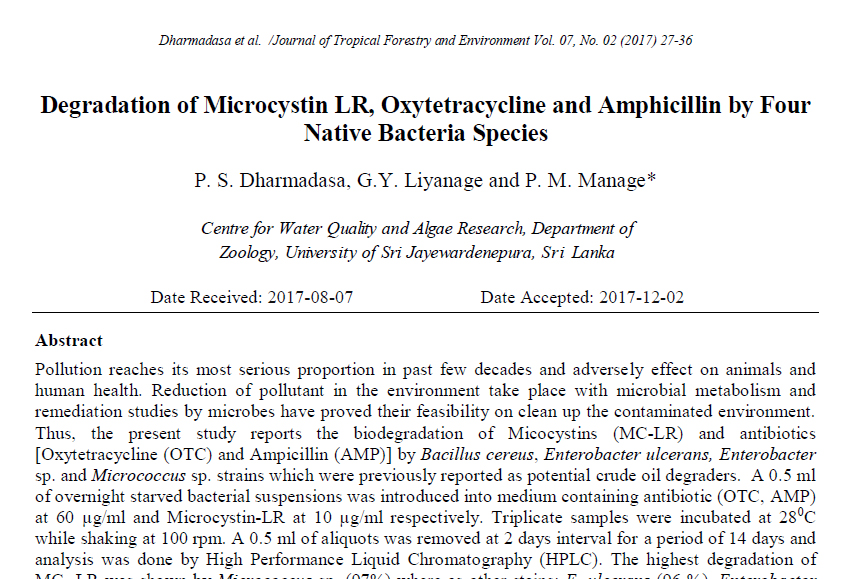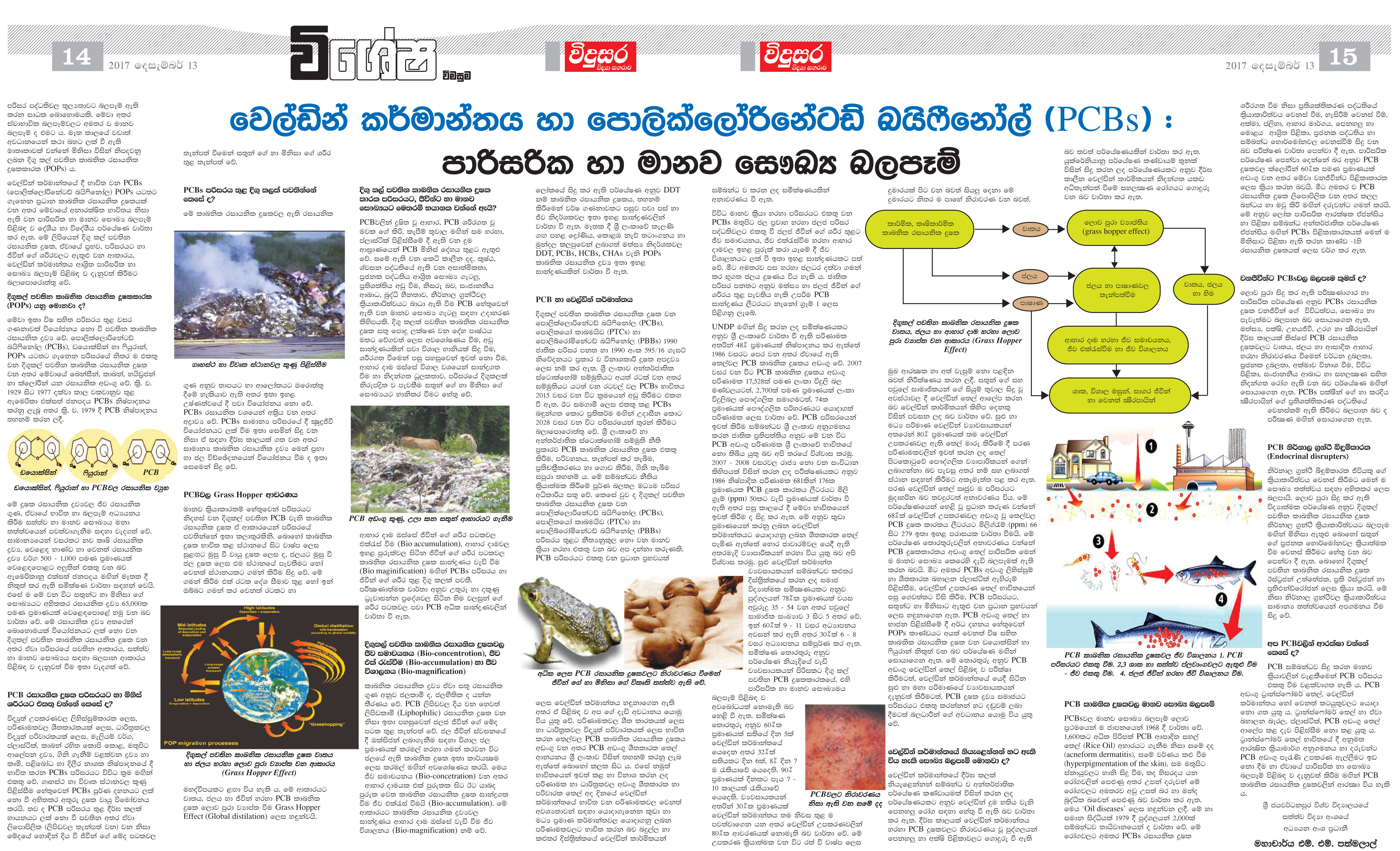Authors: Manoj Wijesekara & Pathmalal Manage
Journal: Journal of Tropical Forestry and Environment
Cyanobacteria, highly diverse group of prokaryotes are recognized as a potent source of biologically active compounds with antiviral, antibacterial, antifungal, and anticancer properties.The aim of the present study was to screen antibacterial, antifungal and cytotoxic activities of intracellular secondary metabolites of freshwater cyanobacterium Oscillataria sp. Cyanobacterium Oscillatoria sp. was isolated from Senanayaka Samudraya reservoir (70 11’ 37.370N 810 31’ 47.130E), Sri Lanka.In vitro antibacterial and antifungal activity of Oscillatoria sp. was screened against Gram-positive Methicillin-resistant Staphylococcus aureus (MRSA) ATCC 25923, Bacillus anthracis and Gram-negative Pseudomonas aeruginosa (ATCC 25853), Salmonella typhi and Escherichia coli (ATCC 25922) and fungi, unicellular Candida albicans (ATCC 60192) and Candida tropicalis using agar disc diffusion method.The Minimum Inhibitory Concentrations (MIC), Minimum Bacteriocidal Concentration (MBC), Minimum Fungicidal Concentrations (MFC) and cytotoxic effects (brine shrimp bioassay) of Oscillatoria crude extract were determined. 10% and 60% of biomass was extracted with hexane and methanol respectively.Gas Chromatography-Mass Spectrometry (GC-MS) was used to identify compounds in the crude extract. The highest antibacterial and antifungal activity of crude extract were detectedin methanol extract against S.aureus (19 ± 2 mm)and C.albicans (10 ± 1 mm) within 24 hours wherein the hexane extract, antibacterial activity was detected only for S. aureus and mean diameter of inhibition zone was 11 ± 1mm within 24 hours.The lowest MIC of methanol extract against S. aureus wasfound as 156.25 μg/ml. The lowest MBC and MFC of methanol extract againstS. aureus and C.albicans were 0.63 mg/ml and 1.25mg/ml respectively. Lethal concentration, 50% of the crude extract against brine shrimp was recorded at 2.50 g/l, 1.25 g/l and 0.625 g/l for 6, 12, 24 hrs intervals respectively. GC-MS analysis revealed that the methanol crude extract of Oscillatoria sp. contains important fatty acid namely hexadecanoic acid methyl ester, methyl tetradecane and 13-tetradecanoic acid and n-hexane extract contains Bis (2-ethylhexyl hydroxypyridine oxide, 1 2-benzenedicarboxylic acid mono (2-ethylhexyl) ester, Phthalic acid 6-ethyl-3-Octyl heptyl ester and Phthalic acid dodecyl nonyl ester which may possess antibacterial and antifungal properties.




